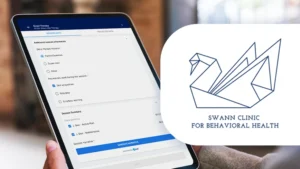Written by Rick Kubina
Let’s say you want behavior change. The change can involve absolutely anything. Eating less double stuffed Oreo’s, reducing/eliminating swearing when watching your sporting event in public, saying more kind words to children you babysit, or ANY behavior change target.
Before we can address what you would do to make your goal a reality, an absolutely critical task to complete involves first identifying the behavior. Why is this so important?
Detecting pinpoints
In Precision Teaching, the term pinpoint refers to a phrase describing directly observable, measurable, active behavior. The pinpoint gives people great precision when detecting whether or not a behavior occurs. If people can’t figure out or have poor reliability determining the presence or absence of a pinpoint, a real problem exists. How can anyone ever conclude whether an intervention worked if problems exist without pinpoint detection? And for that matter, how do we know if a problem even exists if we have trouble identifying the targeted behavior (i.e., pinpoint)?
The figure below shows the possible outcomes of pinpoint detection. A pinpoint can occur and an observer can detect it. In such a case we have proper discovery, a legitimate hit. Likewise, we can get false positives and false negatives.
Figure 1: A matrix showing the possible outcomes when detecting a pinpoint.
If a pinpoint occurs and the observer does not record an instance of occurrence, then we have a false negative. False negatives lead an observer to conclude the presence of behavior where none exists. For instance, a teacher monitors a student’s cheating behavior during class. The teacher perceives the presence of cheating when in fact it did not occur or appeared much less frequently than observed.
Another pinpoint detection problem takes place when an observer does not notice the presence of a pinpoint but the pinpoint did manifest itself. Using the previous example, a teacher does not observe a student cheating but the cheating pinpoint did take place. The teacher would falsely infer no problem with cheating exists when it does.
What to do
The best way to address pinpoint (behavior) detection starts with generating a solid pinpoint. Watch the clip below and think or write what pinpoint you see.
Figure 2. An animated gif showing behavior.
I showed the video to students in a class I teach and asked them to tell me what they saw. The pinpoint list they generated follows below:
- A student is writing answers to math problems.
- She answers problems by writing the answer with a marker.
- Writing answers for multiplication problems.
- Using a writing device to produce answers to a non-completed math equations.
- Writing answers.
- Writing math facts.
- Answering multiplication problems with a marker.
- Student will answer math fact problems, specifically multiplication, when seeing the problem.
- Determining the correct answer to simple multiplication problems.
- Written answers for written math stimuli.
- Multiplying digits and writing the answer to the problem.
- Applying the multiplication algorithm to multiplication facts.
As you can see from the list, a great deal of variability exists in the labels of the behavior. And with great variability comes potential for great problems discerning the presence or absence of behavior. Which label should we pick?
Movement and the Pinpoint+ Generator
In the science of behavior, behavior has a definition that revolves around movement. The founder of the science of behavior, B.F. Skinner, gave us the following classic definition:
Behavior is what an organism is doing; or more accurately what it is observed by another organism to be doing” (Skinner, 1938, p. 6).
Contemporary definitions of behavior follow suit:
“Behavior is anything an animal (including the human animal) does” (Malott & Shane, 2014, p. 6).
“Behavior is that portion of an organism’s interaction with its environment that involves movement of some part of the organism” (Johnston & Pennypacker, 2009, p. 31).
Therefore, good descriptions and targets of behavior will involve movement.
In Precision Teaching the term movement cycle refers to a short phrase containing a directly observable action and an object receiving the action. Examples include hits ball, slaps hand, bites food, waves hand, and writes word. All of the movement cycle examples directly, and unambiguously, lead to sharp depictions of behavior.
When we add context to a movement cycle, we have just produced a pinpoint. Context means the circumstances that form the setting for the behavior. In the previous movement cycles, see how adding context makes them even more conspicuously evident:
- Hits ball with a bat
- Slaps hand when giving a high five
- Bites food during lunch
- Waves hand when saying goodbye
- Writes word in notebook
Can you just visualize the behaviors above? They are so clear anyone could observe them happening.
A third element to describe behavior appears in the form of a learning channel. A learning channel refers to the linked unit of a sensory In (any of our senses – smell, taste, see etc.) and a behavioral Out involved in performing a behavior. For instance, seeing a math problem and writing answers would form a see-write learning channel set. Hearing a song playing on the radio and singing along with it falls under the hear-say learning channel set.
Chartlytics, a CentralReach Product, has a Pinpoint+ Generator to help solve the problem of creating solid pinpoints.
Figure 3. A screenshot of the pinpoint+ generator.
The pinpoint+ means adding a learning channel to a pinpoint, a pinpoint plus (+) a learning channel – clever name right?
Notice how the fields guide the user through all of the steps necessary for generating an intensely descriptive pinpoint. We still leave open the option for people to pick their own pinpoint (shown on the right side of the figure). But the pinpoint+ generator delivers great value in selecting common pinpoints, and getting starting with your own pinpoint generation.
Behavior is fluid and complex. By using a pinpoint plus a learning channel, detecting behavior significantly improves. And when behavior detection improves, the data gain reliability and foster meaningful insights.
References
Johnston, J. M., & Pennypacker, H. S. (2009). Strategies and Tactics of Behavioral Research (3rd ed.). New York: Routledge.
Malott, R. W., & Shane, J. T. (2014). Principles of Behavior (7th ed.). Upper Saddle, NJ: Pearson.Skinner, B. F. (1938). The Behavior of Organisms: An Experimental Analysis.Cambridge, MA: B.F. Skinner Foundation.
Students with disabilities have many challenges. But with systems like Chartlytics, teachers can learn to pinpoint meaningful behavior, measure behavior with precise metrics, have students practice to fluency (access fluency materials), and monitor all data on a powerful visual display – the Standard Celeration Chart.






